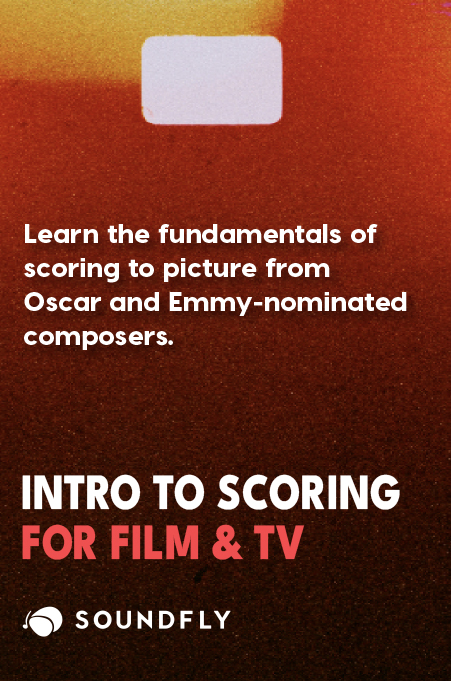+ Learn to craft more compelling beats and warped, broken rhythms with Son Lux’s Ian Chang. His innovative course is out now on Soundfly.
There’s nothing quite like a four-on-the-floor beat to get your feet tappin’, heads bobbin’, and butts movin’. But as any truly clued-in musician knows, sometimes less truly is more. In fact, there are many creative ways to produce rhythmically forward-driving music without that dependable low-end kick pulse.
So let’s look at six tracks broadly fitting into the style of “electronic music” that forego the powerful kick drums for which the genre is generally known and provide rhythmic outlets through other means entirely. Whether you’re a seasoned electronic production professional or just getting started making beats, take note!
Oneohtrix Point Never – “Power of Persuasion” (2011)
Built on what sounds like a chopped-and-screwed piano, “Power of Persuasion” deeply explores subtle rhythmic shifts with nary a drum sample in earshot. Daniel Lopatin’s unique sampling approach reinforces a silent pulse to ground the track while articulating varying rhythms around it. A shuffle feel gives way to a straight feel, and then back again. The length of the bar changes, yet the tempo stays pretty solid throughout.
This track is a shifting landscape that also feels natural and organic, a track with momentum that also feels delicate and spacious. You’re left with the feeling that an audible beat would take away from Lopatin’s mysterious and contemplative soundscape.
Four Tet – “Spirit Fingers” (2003)
Keiran Hebden’s celebrated solo project is a nexus where electronica and post-rock meet. Rounds is a watershed album in experimental sampling. In the absence of a kick drum, persistent hi-hats push the song forward.
The pulse is clear, but without constant bass information, the song has an interesting sonic space. The low end is blurry and indistinct (in a good, unique fashion), leaving room for the busy top-end harp plucks to give the song its disorienting, yet exciting, feeling.
+ Learn how to marry theory, improvisation, and beat making to become a better pianist and producer, with Grammy-winner Kiefer’s Keys, Chords, & Beats.

Nils Frahm – “Says” (2013)
The first thing we hear is a lonely synth loop run through a tape echo — more than a little reminiscent of Vangelis. Frahm plays his rubato piano flourishes against the digital consistency of the ostinato, a dialogue between a human and a computer’s interpretation of rhythm.
In the absence of any drums at all, Frahm rides the cutoff frequency on his synthesizer to drive “Says” towards a beautiful and melancholic climax. When that first chord change hits, it’s breathtaking and as big as any EDM sub-drop you’ve ever heard.
Julianna Barwick – “Nebula” (2016)
Swathed in Barwick’s lush, loop pedal-treated vocals, “Nebula” is gently pushed along by a four-note synth arpeggio and some minimalist bass synth notes. Landing somewhere between Boards of Canada, Enya, and Sigur Ros, Barwick layers her voice into a soothing choir that works a bit like an analog pad. Without a kick drum pulsing away, the rhythmic focus comes from the repeated melodic and tonal fluctuations in her voice.
Oval – “Line Extension” (1995)
Oval is one of the unsung pioneers of glitch music, infamous for production techniques that involved purposefully damaging CD surfaces so that the unpredictable skips and jumps could be sampled. “Line Extension” is a freeform exploration of this technique.
The song is calm and reflective despite a constant flux of random digital information bubbling just below the surface. Without a discernible pulse to tie it all together, it’s a testament to just how fascinating a freeform and arrhythmic approach to percussion parts can be. The effect is almost like when your CD or record skips, and you can’t help but start bobbing your head at the new looping groove.
+ Read more on Flypaper: “606-909: The Legendary Roland Drum Machine Series”
Steve Roach – “Quiet Friend” (1983)
Ladies and gentlemen, we are floating in space. One of the undisputed masters of ambient music and a forefather of the genre’s modern era, Roach stretches “Quiet Friend” out for just over 13 minutes. Aside from the incredible delicacy and peacefulness of the sound world, the song is remarkable for how Roach’s dense harmonies create gentle fluctuations in the synth landscape.
As your brain relaxes into the repetition, you’ll tune into the warbling rhythms contained in the warm analog synths themselves, and your attention will follow those fluctuations like a path that opens up and closes repeatedly. Pitch collapses into rhythm with the two becoming eventually indistinguishable. You can go deep with this stuff if you want. Roach explores a more conventional pulse, the parameters of which outlined by chiming arpeggios, as the song coasts towards its gentle conclusion.

I hope you enjoyed this little exposition of clever, kick-less approaches to rhythm in electronic music. There are, of course, tons more incredible tracks out there that achieve similar results via different routes, feel free to post your favorites (and your own) in the comments!
Don’t stop here!
Continue learning with hundreds of lessons on songwriting, mixing, DIY home recording and production, composing, beat making, and so much more in Soundfly’s courses with artists like RJD2, Ryan Lott, Kiefer, and Jlin: Rhythm, Variation, & Vulnerability.




